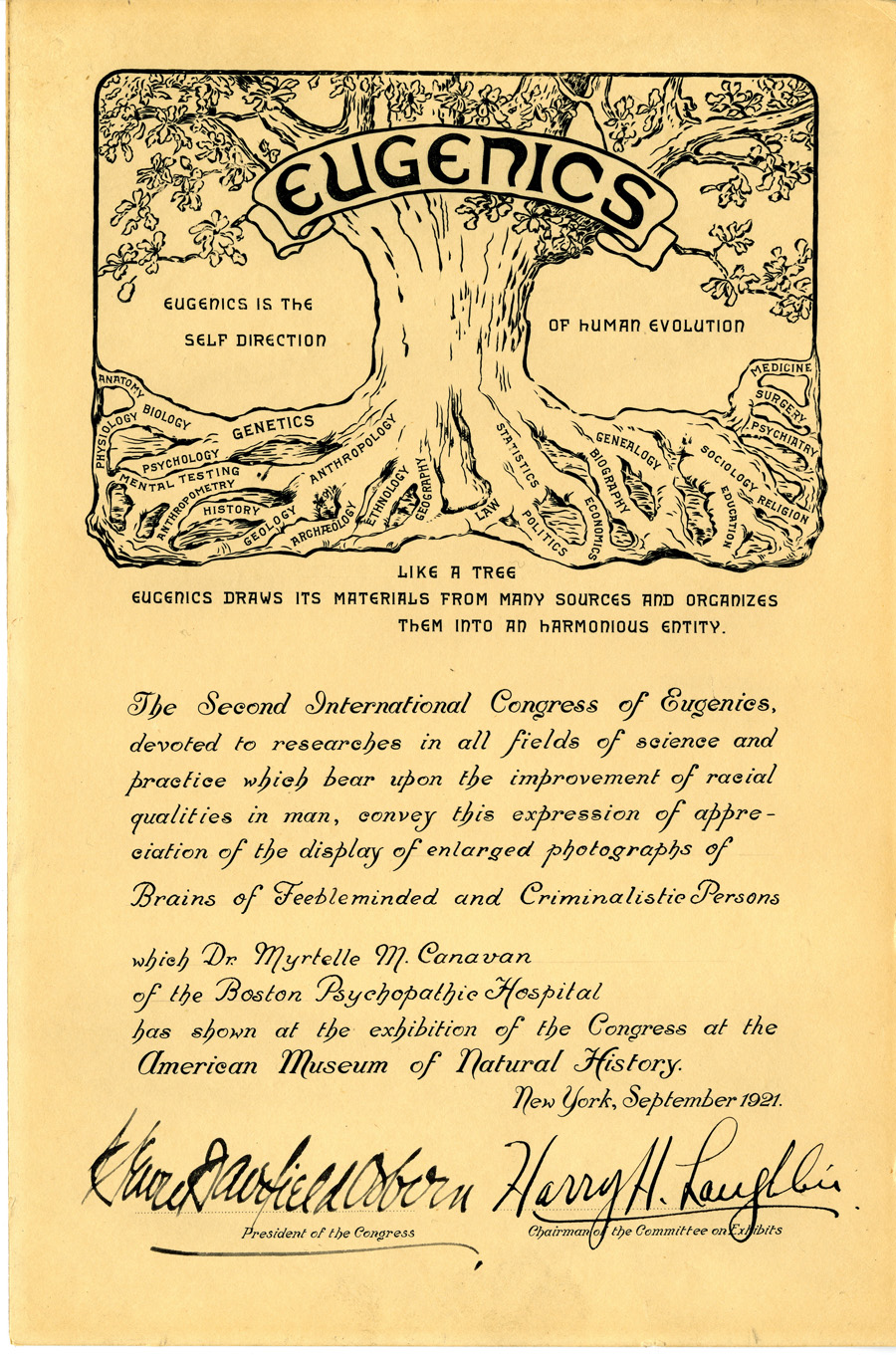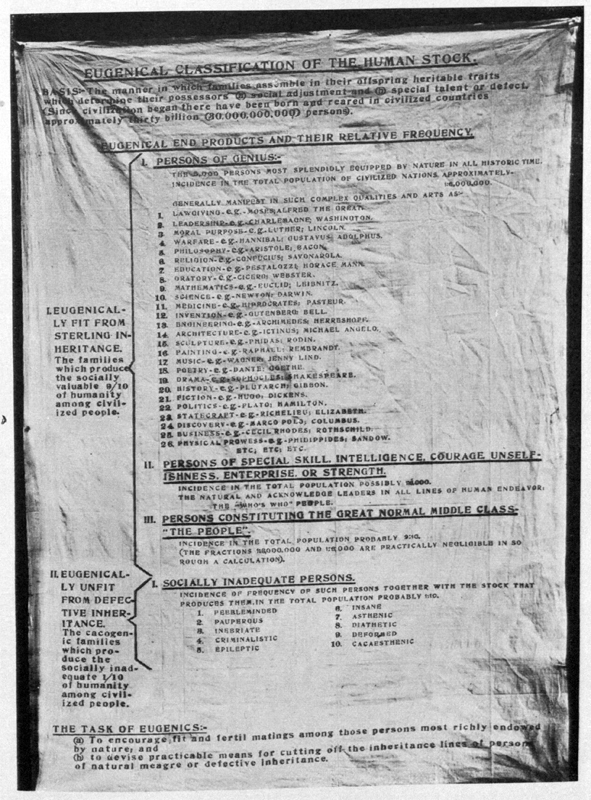Logo from the Second International Eugenics Congress, 1921

MU Libraries, University of Missouri. “International Eugenics Congresses.” Controlling Heredity: The American Eugenics Crusade: 1870-1940. ://library.missouri.edu/exhibits/eugenics/congresses.htm, 2011-03-07T17:00:20-05:00.
2nd International Congress of Eugenics. “Certificate of Appreciation from the Second International Congress of Eugenics.” Center for the History of Medicine: OnView, September 1921.
Eugenics Archive. “Eugenic Archives: ‘Copy of Certificate Awarded for Meritorious Exhibits," at the Second International Congress of Eugenics.” Eugenics Archive. ://www.eugenicsarchive.org/html/eugenics/static/images/543.html, 2004.
One of few examples of a tree of knowledge where disciplines combine rather than separate out. In this case, the roots represent a past of scientific disunity, but they come together in the new science of eugenics.
Fittingly for an illustration calling eugenics the "self-direction of human evolution", it inverts the message of medieval tree diagrams. Earlier trees were transcendental, representations of how people or thoughts fit in the larger order of the cosmos. While they weren't necessarily all saying "this is how God orders the world," they did provide a structure that existed independent from human intervention.
Eugenicists, intending to bend nature to their own devices, illustrated this tree in opposition to its precedents. This was not "how the cosmos orders us", but "how we order the cosmos." They have designed a new tree by ordering the chaos of disciplines, and that tree is alive, healthy, and blooming.
This illustration was printed on certificates awarded to "meritorious" exhibition entries at the 2nd International Eugenics Congress held at the American Museum of Natural History in September 1921. It is based on a 1919 paper by Harry Laughlin called "The relation of eugenics to other sciences", and it is quite similar to the logo displayed at the entrance to the 3rd International Eugenics Congress in 1932.
Laughlin, Harry H. “The Relation of Eugenics to Other Sciences.” The Eugenics Review 11, no. 2 (July 1919): 53–64.
Another scan, this of the whole page of the certificate:

The tree was of particular import to the eugenics movement, given its common usage in showing family relations. Below is an image, from the same group, showing a taxonomy of people for the purpose of selective breeding:

On an unrelated note, these people were awful and I'm glad they're gone.
| Created: 08 Jul 2016 | Modified: 08 Jul 2016 | History | Markdown | Permalink |
- Tags:
